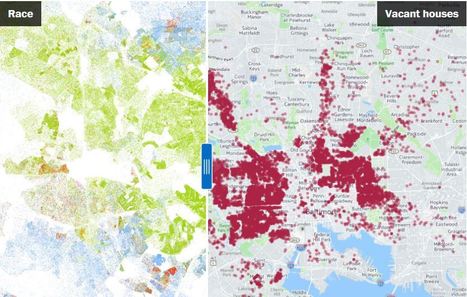"In just a few generations, we have tightly restricted American kids' freedom to roam, play, and become self-sufficient. The percentage of children walking and bicycling to school has plummeted from almost 50 percent in 1969 to about 13 percent today. Although distance from school is often cited as the main barrier to walking and bicycling, many families still drive when schools are close to home. According to the Safe Routes to School National Partnership, driving accounts for about half of school trips between 1/4- and 1/2-mile long — which in most cases shouldn't take kids much more than 10 minutes to walk."
Get Started for FREE
Sign up with Facebook Sign up with X
I don't have a Facebook or a X account
 Your new post is loading... Your new post is loading...
 Your new post is loading... Your new post is loading...

Victoria McNamara's curator insight,
December 11, 2013 10:52 AM
We may not realize it but when we take our kids out on drives to run errands or if we move to a different area we are ruining their understanding of the area they live in. Children often have a hard time of figuring out where they are if they constantly in a car looking at new places. This can cause them to lack a sense of direction and maybe have trouble remembering streets or landmarks near their homes. |
Lauren Quincy's curator insight,
May 24, 2015 9:14 PM
Unit 7: Cities and Urban Land Use
This article is about Sandtown, Baltimore and its shift into a disamenity sector. It explains how this neighborhood, mainly housed by blacks, had a high percentage of vacant houses. The article says that this neighborhood is overrun with poverty, war on drugs and gangs and has the more residents in jail than any other neighborhood. This shows the changing demographics of the city of Baltimore.
This relates to unit 7 because it covers the topic of disamenity sectors and changing demographics. It shows reasons for the high levels of poverty and abandoned housing. It also shows the racial spatial distribution of the neighborhood and its correlation to housing and development. 
Lydia Tsao's curator insight,
May 26, 2015 1:46 AM
This article left me heart broken. The African American community in Baltimore is stuck in a deep poverty cycle, and it cannot seem to escape its impoverished past. Even now, the poverty in the area seems to just be getting worse. The problems of income disparity lead to more problems than just economic; they lead to social and political problems. Social unrest and injustice occurs as a result of the modern white flight. This article arose as a result of the death of Freddie Gray, whose death demonstrates a significant social issue that needs to be addressed: police brutality and the criminal targeting of the African American community. His death stems from the tremendously amounts of disparity in the city. Promoting investment in the inner city would definitely help alleviate the poverty in the area. The problem is getting people to invest. |













Also applies to unfortunate Turkey w/her recent urban transformation wave...